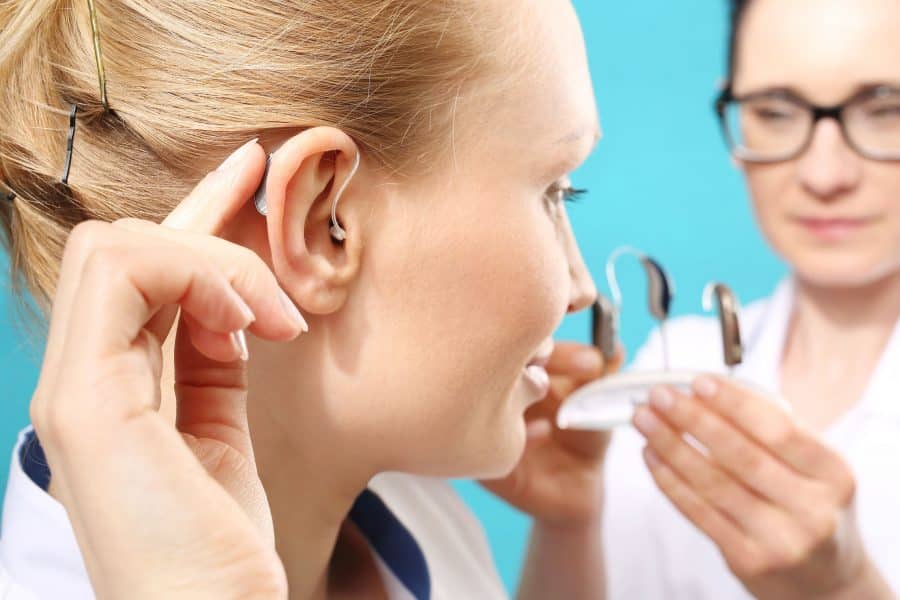Everything You Need to Know to Choose the Right Hearing Aid
Despite being around for centuries, hearing aids are still a relatively new technology. As such, there is a lot of information people may not know, that they should take into consideration before making a purchase.
Like most people, you likely have questions about hearing aids. Hearing aids are essential, but choosing the right one can be difficult. If you don’t know which hearing aid is best, read on to learn more about choosing the appropriate hearing aids and what to look for in them.
How to Choose the Right Hearing Aids for You
Here’s everything you need to know before choosing your hearing aids.
The Function of Hearing Aids
As the name suggests, hearing aids are devices that help people with hearing loss to hear clearly. There are various types of hearing aids, each with its own specific purpose. Here are the three main functions of hearing aids:
- Amplification: Amplification amplifies sound so that it can be heard clearly.
- Directional assistance: Directional assistance helps you to hear sounds in specific directions.
- Correction: Correction corrects your hearing so that you can understand spoken words more clearly.
Hearing Aid Models

Hearing aids differ in cost, shape, functionality, and insertion method.
Entirely in the Canal (CIC) Or Mini Canal
CIC hearing aids are designed to completely immerse the user in the world around them. They’re usually worn in the ear canal and work with a tiny microphone that picks up sound directly from the speaker.
Mini CIC hearing aids are similar to CIC hearing aids but smaller and easier to wear. They’re also less expensive than CIC hearing aids, which makes them a good choice for people who want an affordable solution.
Inside the Canal (ITC)
A hearing aid known as an in-the-canal (ITC) device is designed to fit inside the ear canal partially. This technique may help adults with mild to moderate hearing loss.
In the Ear (ITE)
In-the-ear (ITE) hearing aids are made in two styles: entire and lower shells (half shells). Each aids in moderate to severe hearing impairment and has directional mics (two microphones for better hearing).
Behind the Ear (BTE)
A BTE hearing aid hooks over the ear and lies behind it. A tube links the auditory aid to your specific ear mold. This kind is the same for all ages and auditory impairment types.
Receiver in Canal or Receiver in the Ear
Receiver in canal hearing aids sit behind the ear. The receiver is outside the hearing aid, and sound is sent directly to the inner ear through a thin wire. This is the most common type of hearing aid.
Open Fit Receiver in Canal or Receiver in the Ear
Open-fit hearing aids are behind-the-ear aids with a thinner tube or receiver-in-the-canal or receiver-in-ear aids with an accessible dome. This form opens the ear canal, allowing low-frequency sounds and amplifying high-frequency sounds. They work best for people with mild to moderate hearing loss.
Other Characteristics to Consider
Apart from the fit and price, it’s also important to look at the features the hearing aid offers and how well they suit the type of hearing loss you have.
Types of Hearing Loss
There are three main types of hearing loss: conductive, sensorineural, and mixed hearing loss.
- Conductive hearing loss is caused by problems in the outer layer of the ear, such as an ear wax build-up or an infection.
- Sensorineural hearing loss is caused by problems in the middle ear or the nerve that sends sound signals to the brain.
- Both conductive and sensorineural losses cause mixed hearing loss.
Importance of Noise Reduction
Most people with conductive or sensorineural hearing loss need noise reduction (NR) technology in their hearing aids to be effective.
NR technology helps block frequencies from being heard, reducing background noise levels and helping you hear better in noisy environments. If noise reduction isn’t a priority for you, choose a model without NR technology.
Age and Gender
Most people need a different type of hearing aid depending on their age and gender. For example, young children usually need smaller hearing aids that fit more securely in the ear. As they age, they may require larger hearing aids on top of the ear.
Occupation and Level of Noise Exposure
If you work in a noisy environment, for example, you may need a louder type of hearing aid than someone who lives in a quiet neighborhood. Also, if you’re frequently exposed to loud noises, such as gunfire or rock concerts, you may require special protection for your ears called Tinnitus Retraining Therapy.
Adapting to Your Hearing Device
Once you’ve got your hearing device, it may not be smooth sailing off the bat. Even if you followed all the steps above and did all your research, it may still take some time to get used to your new hearing aids, especially if it’s your first time wearing them. Remember, hearing aids don’t replicate exactly how you used to hear prior to hearing loss, so it’s bound to be different.
Some of this can be chalked down to the fact that hearing aids pick up sounds and stimuli that your brain might have forgotten about if you’ve spent some time with hearing loss. But in general, just the fact that it’s a new sensory experience will take some time to adjust to. You may find the sound of your own voice different or unfamiliar, or find that the sounds of chewing and swallowing are much louder than you might be used to. However, these sensations will dissipate in time.
Some tips to get used to your hearing aids include:
- Wearing them at home or in quiet environments at first
- Focus on having one-on-one conversations with people. You can even read aloud to get used to your own voice.
- Practice! You can do this by trying to single out the source of the sounds you hear all around you.
- Meet your hearing care specialist for follow-ups in order to finetune any issues you might be having.
Adapting to your new hearing aid will be a learning curve, since there may be a lot more background noise (even with a noise-canceling hearing aid) that you couldn’t hear before. With some time, your brain will relearn how to tune those sounds out so you can live your life comfortably.
With these tips in mind, finding the perfect hearing aid for you shouldn’t be too tricky! To get expert advice on the best type of hearing aid for you, Wichita Falls Hearing would be happy to discuss your options with a no cost, no obligation consultation.

